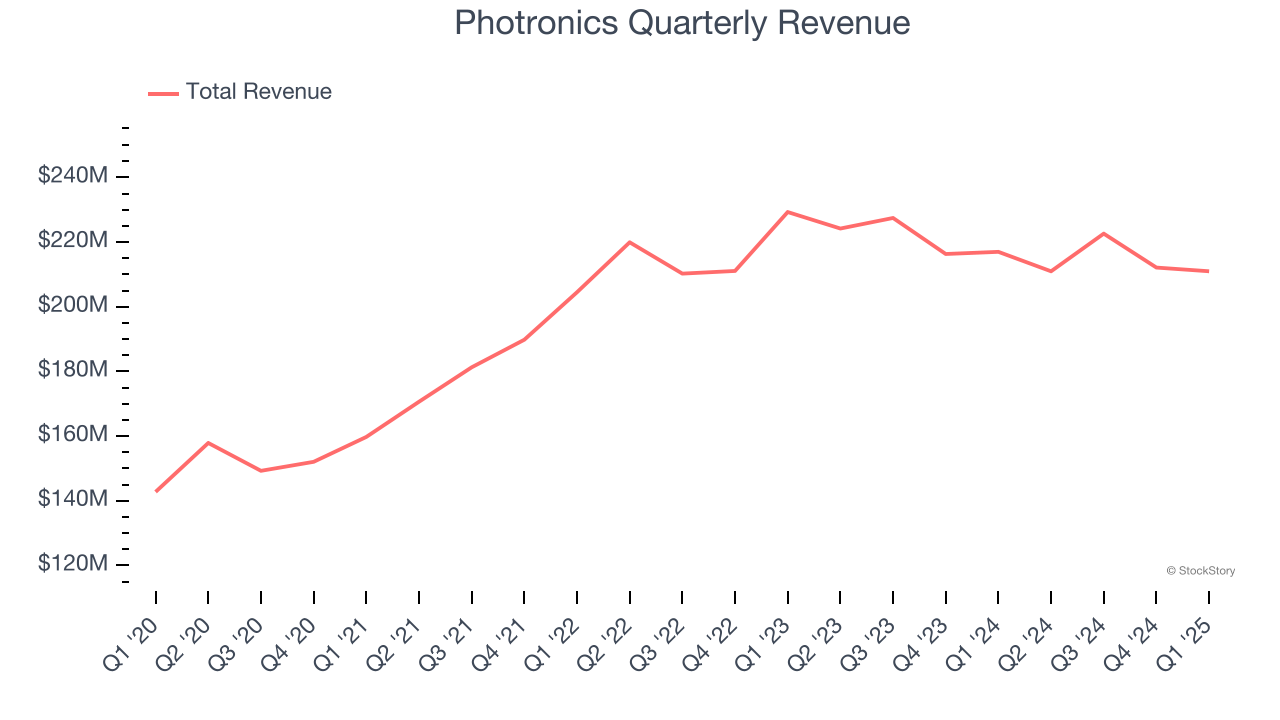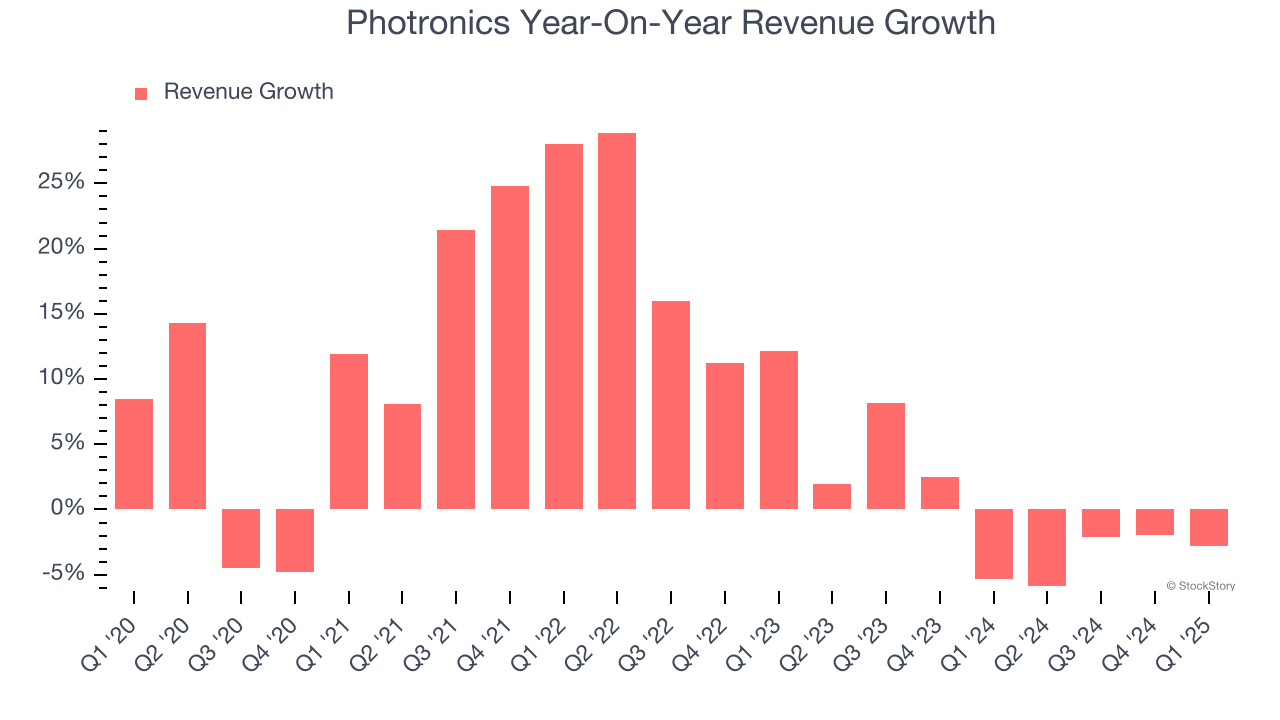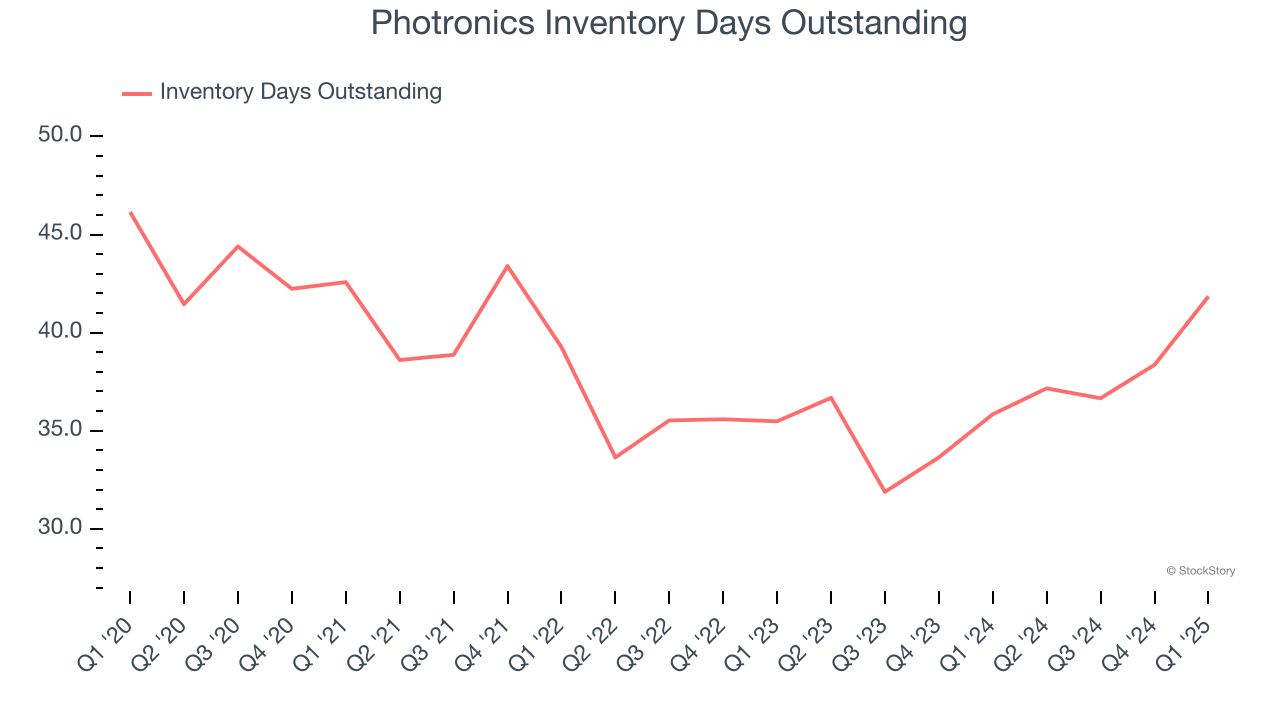
Semiconductor photomask manufacturer Photronics (NASDAQ: PLAB) met Wall Street’s revenue expectations in Q1 CY2025, but sales fell by 2.8% year on year to $211 million. On the other hand, next quarter’s revenue guidance of $204 million was less impressive, coming in 7.3% below analysts’ estimates. Its non-GAAP profit of $0.40 per share was 16.7% below analysts’ consensus estimates.
Is now the time to buy Photronics? Find out by accessing our full research report, it’s free.
Photronics (PLAB) Q1 CY2025 Highlights:
- Revenue: $211 million vs analyst estimates of $212 million (2.8% year-on-year decline, in line)
- Adjusted EPS: $0.40 vs analyst expectations of $0.48 (16.7% miss)
- Revenue Guidance for Q2 CY2025 is $204 million at the midpoint, below analyst estimates of $220 million
- Adjusted EPS guidance for Q2 CY2025 is $0.38 at the midpoint
- Operating Margin: 26.4%, in line with the same quarter last year
- Free Cash Flow was -$29.1 million, down from $56.49 million in the same quarter last year
- Inventory Days Outstanding: 42, up from 38 in the previous quarter
- Market Capitalization: $1.28 billion
“I would like to thank Frank for leading Photronics over the past three years as CEO,” said Mr. Macricostas.
Company Overview
Sporting a global footprint of facilities, Photronics (NASDAQ: PLAB) is a manufacturer of photomasks, templates used to transfer patterns onto semiconductor wafers.
Sales Growth
Examining a company’s long-term performance can provide clues about its quality. Any business can experience short-term success, but top-performing ones enjoy sustained growth for years. Over the last five years, Photronics grew its sales at a mediocre 7.5% compounded annual growth rate. This wasn’t a great result compared to the rest of the semiconductor sector, but there are still things to like about Photronics. Semiconductors are a cyclical industry, and long-term investors should be prepared for periods of high growth followed by periods of revenue contractions.

Long-term growth is the most important, but short-term results matter for semiconductors because the rapid pace of technological innovation (Moore's Law) could make yesterday's hit product obsolete today. Photronics’s recent performance shows its demand has slowed as its revenue was flat over the last two years. 
This quarter, Photronics reported a rather uninspiring 2.8% year-on-year revenue decline to $211 million of revenue, in line with Wall Street’s estimates. Despite meeting estimates, the drop in sales could mean that the current downcycle is deepening. Company management is currently guiding for a 3.3% year-on-year decline in sales next quarter.
Looking further ahead, sell-side analysts expect revenue to grow 5% over the next 12 months. While this projection implies its newer products and services will catalyze better top-line performance, it is still below the sector average. At least the company is tracking well in other measures of financial health.
Today’s young investors won’t have read the timeless lessons in Gorilla Game: Picking Winners In High Technology because it was written more than 20 years ago when Microsoft and Apple were first establishing their supremacy. But if we apply the same principles, then enterprise software stocks leveraging their own generative AI capabilities may well be the Gorillas of the future. So, in that spirit, we are excited to present our Special Free Report on a profitable, fast-growing enterprise software stock that is already riding the automation wave and looking to catch the generative AI next.
Product Demand & Outstanding Inventory
Days Inventory Outstanding (DIO) is an important metric for chipmakers, as it reflects a business’ capital intensity and the cyclical nature of semiconductor supply and demand. In a tight supply environment, inventories tend to be stable, allowing chipmakers to exert pricing power. Steadily increasing DIO can be a warning sign that demand is weak, and if inventories continue to rise, the company may have to downsize production.
This quarter, Photronics’s DIO came in at 42, which is 4 days above its five-year average, suggesting that the company’s inventory has grown to higher levels than we’ve seen in the past.

Key Takeaways from Photronics’s Q1 Results
We struggled to find many positives in these results. Its revenue guidance for next quarter missed and its EPS fell short of Wall Street’s estimates. Overall, this was a softer quarter. The stock traded down 5.4% to $19 immediately after reporting.
The latest quarter from Photronics’s wasn’t that good. One earnings report doesn’t define a company’s quality, though, so let’s explore whether the stock is a buy at the current price. We think that the latest quarter is only one piece of the longer-term business quality puzzle. Quality, when combined with valuation, can help determine if the stock is a buy. We cover that in our actionable full research report which you can read here, it’s free.







